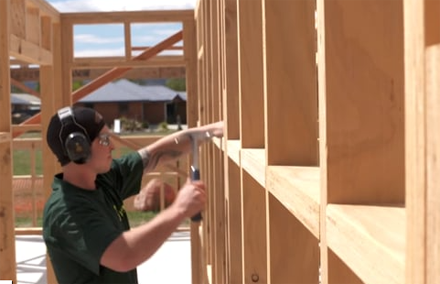
New Zealand wood products already undergo strict and independent, third-party scrutiny to ensure that they comply with the NZ Building Code. Source: Timberbiz
All NZ wood products are made to standards and codes set by the official NZ standards body, Standards New Zealand, and by the building industry regulator, the Ministry of Business, Innovation and Employment.
Adherence to these standards is then assured through inspection by independent verifiers operating throughout the country.
Assurance of fitness for purpose is provided by Building Consent Authorities checking that the correctly specified product goes into the right place in the structure. All of this means that customers can be confident in NZ wood products.
“That said, in this day and age, customers require much more from our product range. Our customers want to be assured that the products they are buying come with hard evidence that they are doing the right thing for the environment,” WPMA Chair, Brian Stanley said.
“This is why I’m delighted to announce today that the WPMA and thinkstep Ltd are working together to enable processors and manufacturers of NZ wood products to state with certainty the environmental impacts of the products they produce and the processes they use.”
While it is widely accepted that wood products have a relatively low environmental footprint, there is at this stage only one recognised and audited means of calculating and communicating relevant environmental impacts: the Environmental Product Declaration (EPD).
An EPD is a verified and registered document that communicates transparent and comparable information about the life-cycle environmental impacts of products.
The EPD will be published under the Australasian EPD Programme – part of the global International EPD System – following international standard ISO 14025 and European standard EN 15804.
Mr Stanley noted that WPMA member companies have contributed to the development of this EPD and it will cover a wide range of wood products, including structural timber, appearance timber, treated timber, finger-jointed timber and glue-laminated timber.
WPMA member companies believe that supplying authoritative environmental impact data to architects and developers, in a format that enables the total environmental performance of buildings to be calculated will result in their wood products being preferred, both over timber from other sources and to non-timber products in environmentally-discerning markets.
“Growing the market demand for quality-assured, NZ wood is not only good for the environment but is also critical for ensuring more employment and economic growth in regional NZ – a win-win-win for New Zealand”, concluded Mr Stanley.







